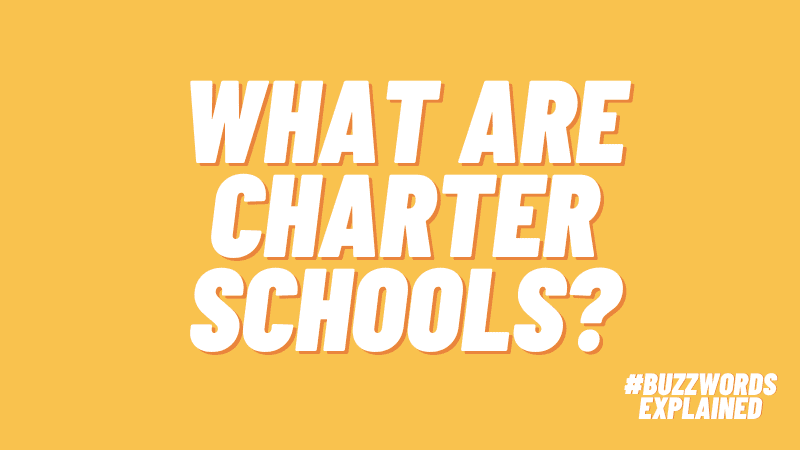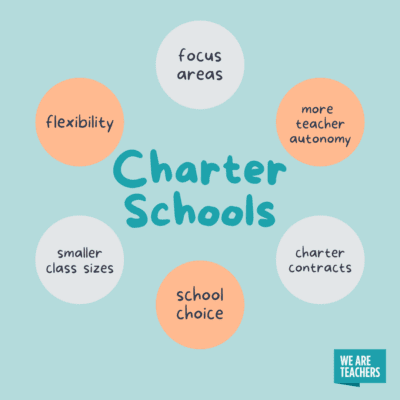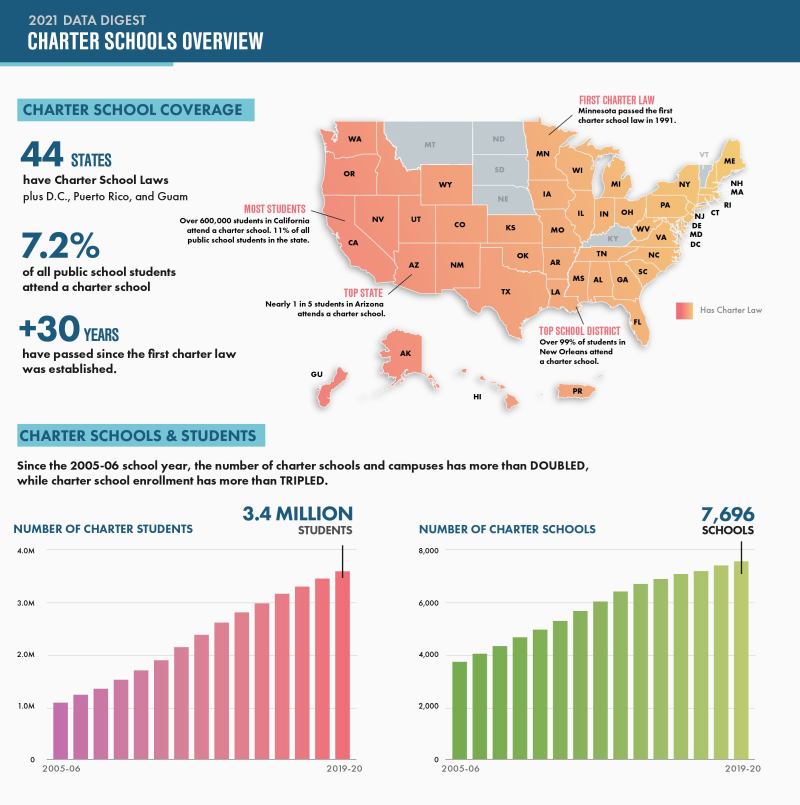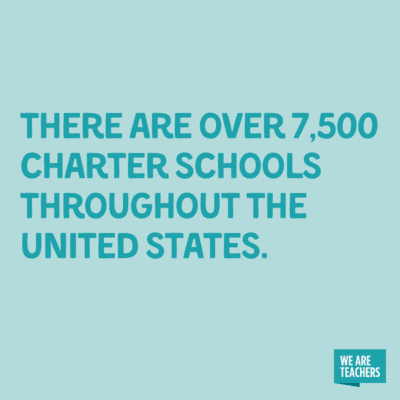 What are charter schools? #buzzwordsexplained" width="800" height="450" />
What are charter schools? #buzzwordsexplained" width="800" height="450" /> What are charter schools? #buzzwordsexplained" width="800" height="450" />
What are charter schools? #buzzwordsexplained" width="800" height="450" />
For years, students in the United States either attended their local public school, a private school, or were homeschooled. These days, though, students and families often have more choices. One option that gets a lot of buzz these days is charter schools. Many parents and teachers want to know what charter schools are and how they are different from traditional public schools. Are they better or worse for students and teachers? These are big questions, and the answers are complex. Here’s a basic overview to get you started.

Charter schools are tuition-free schools that are independently run but publicly funded. Advocates call them “schools of choice.” Rather than being bound by state education laws, these schools create their own contracts (known as “charters”). These charters establish a school’s learning goals, mission, financial guidelines, and more. Each charter school has its own set of governing rules, which may or may not align with a state’s educational guidelines.
The 1970s saw a push for greater independence in education, attempting to provide teachers and schools the ability to create innovative solutions to their individual challenges. In 1971, UC Berkeley professors outlined proposed changes in a paper called “Family Choice in Education.” Ray Budde coined the term “charter school” in 1974, but the first charter school in the United States, City Academy in St. Paul, Minnesota, didn’t open until 1992.
Like other public schools, charter schools receive funding based on enrollment. Each state funds their public schools differently, with formulas that consider a variety of factors. Sixty-one percent of states use the same formula for charters as they do for traditional public schools. Others limit or expand these schools’ access to local, state, or federal funding.
In most states, charter schools are subject to oversight by an “authorizer,” which is responsible for ensuring the schools meet their charter goals. These authorizers could be a state agency, a school district, a college or university, or other organization. If the authorizers determine a charter school is not meeting its stated goals, they can choose to shut down a school.
Many charters are part of a nonprofit charter management organization (CMO) network, like KIPP. Though the schools themselves are nonprofit, in some states they may be run by for-profit companies, called education management organizations (EMO). They may also work with for-profit management companies to hire teachers, provide and care for buildings, and more.

The percentage of public school students who attended public charter schools increased by an overall 1.7 million students between 2009 and 2018. They serve a higher percentage of students from lower socioeconomic backgrounds, and there are more of them in urban areas than rural ones.
Many families can choose to send their child to a charter school instead of their district’s public schools. However, some charter schools are so popular that they have caps on enrollment. In these cases, schools usually hold a lottery to select students to fill open seats, and some have application processes.
A 2015 report found that there are two basic types of charter schools, general and specialized. General schools look more like traditional public schools, but teachers usually have more freedom to try different curricula or educational approaches.
ADVERTISEMENTSpecialized schools come in a variety of types (13, according to the report). These may be academic specializations, like STEM, humanities, or performing arts; or they may offer multilingual or single-gender environments. Others focus on behavior, including “progressive” and “no-excuses” schools.

Charter schools are public schools, and they share some similarities with traditional institutions. But there are some major differences to understand too.
Both charter schools and traditional public schools:
But unlike traditional public schools, charter schools:
This is a huge question, one that gets a lot of attention. After all, these schools receive public funding but aren’t required to follow the same rules as traditional public schools. Many worry that ineffective charter schools take money away from struggling traditional schools that need every penny they can get. So what do the experts say?
It’s important to remember that this type of school is still relatively new in the educational world—they’ve only been in existence for 30 years and have slowly gained traction over time. They also vary widely between districts and states, making it hard to study them consistently.
In 2013, a national CREDO study found charter schools were improving in performance. In 2009, charters lagged behind regular public schools in many metrics. But by 2013, they were slightly outperforming district schools. Interestingly, another CREDO study in 2017 found that charters run by for-profit companies were significantly less effective than those run by nonprofits.
Ultimately, each charter school stands on its own. Parents, students, and prospective teachers should look closely at the schools they’re considering. Ask to see measurable metrics based on goals that matter to you, and consider them when making a decision.
It’s very hard to generalize pros and cons, since each school is so different. Remember that those listed here may not apply in every situation.
Pros:
Cons:

Most charter school teacher positions require the same certification as traditional public schools. But there are a lot of differences in being a charter school teacher, and it’s definitely not a job for everyone. Read our full comparison of teaching in charter schools vs. traditional public schools here.
Here are a few general differences about teaching in a charter school.
Members of the WeAreTeachers HELPLINE regularly discuss the ups and downs of teaching at charter schools. Here’s what some of them have to say:
There’s a lot to know about these unique schools. Visit the following sites for more detailed information.